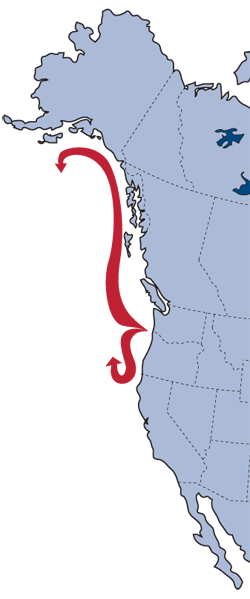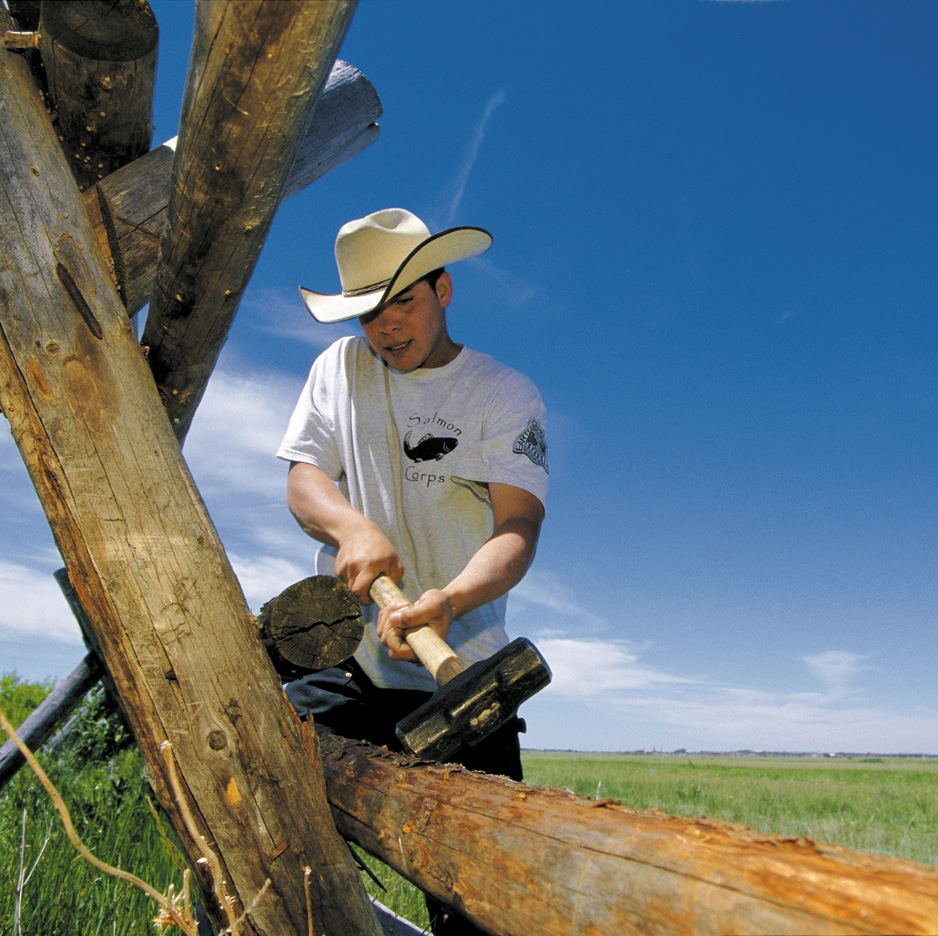CRITFC’s Impact
Over the past 35 years, the Yakama, Umatilla, Warm Springs, and Nez Perce tribes have worked together through CRITFC to achieve significant accomplishments and milestones that have protected tribal treaty fishing rights, salmon, and the watersheds where fish live.
Here is a chronology of CRITFC’s 35 most noteworthy accomplishments of the last three and a half decades:
The Early Years (1977-1989)
| 1977 | Four Columbia treaty tribes found CRITFC |
| Lawsuits continue to make progress enforcing U.S. v. Oregon ruling | |
| 1979 | CRITFC makes “Ocean Connection” confirming ocean fishing’s impact on Columbia River Basin salmon runs |
| 1981 | Freedom of Information Act used to obtain federal hatchery records |
| 1982 | Member tribes and CRITFC major contributors to first Columbia Basin Fish and Wildlife Program |
| Four tribes authorize CRITFC Fisheries Enforcement program | |
| 1983 | Water Budget Center (Fish Passage Center) created |
| 1985 | Four tribes key in gaining bilateral agreement in U.S.-Canada Salmon Treaty |
| Attempts to deny Indian tribes’ steelhead fishing rights finally thwarted | |
| 1986 | Successful lawsuit leads to no new hydropower in protected areas |
| 1988 | U.S. v. Oregon Columbia River Fish Management Plan signed |
| Flow Agreements protect Basin’s largest wild fall chinook populations |
The Middle Years (1990-2001)
| 1991 | Salmon Marketing Program initiated |
| 1992 | Endangered Species Act listings generate new lawsuits |
| 1994 | Member tribes assert treaty right to fish Willamette Falls |
| Snake River fall chinook supplementation won in U.S. v Oregon settlement | |
| Salmon Corps is first Workforce Development Program | |
| Fish Consumption Survey published | |
| 1995 | Wy-Kan-Ush-Mi Wa-Kish-Wit, the Spirit of the Salmon Restoration Plan released |
| 1997 | Watershed Department created to coordinate implementation of Tribal Restoration Plan |
| 1999 | CRITFC and University of Idaho create Hagerman Genetics Laboratory |
| 2001 | Large runs of upriver spring chinook, summer steelhead and coho return |
The Recent Years (2002-2012)
| 2003 | Events invite public to celebrate Wy-Kan-Ush Pum with message “We are All Salmon People” |
| 2004 | Dam spill won to save juvenile salmon |
| 2007 | CRITFC observes 50th Anniversary of the flooding of Celilo Falls |
| 2008 | U.S. v. Oregon Agreement uses new approaches |
| Three CRITFC member tribes and BPA sign Columbia Basin Fish Accords (Nez Perce declined to sign) | |
| Pacific Salmon Treaty Chinook Annex signed by US and Canada | |
| 2010 | CRITFC holds first Indian Fishers Expo |
| One of the most successful tribal fishing seasons to date | |
| Salmon Camp encourages Native youth to study math and science | |
| 2011 | BIA law enforcement duties on Columbia River transferred to CRITFC |
| Four tribes form Tribal FishCo, LLC | |
| CRITFC finalizes Lamprey Restoration Plan | |
| Condit Dam removed to restore fish passage | |
| 2012 | 31 treaty fishing access sites approved by Congress in 1988 completed |
Future Challenges
The work of CRITFC has only just begun. Under the guidance of the four member tribes, there are new challenges to address as we enter the next 35 years of intertribal cooperation. Among these are:
- Reduce toxic contamination in the waters of the Columbia River Basin
- Increase natural spawning of salmon, sturgeon, and lamprey throughout the region
- Find a solution to unchecked predation problems in the Columbia River
- Support changes to the U.S.-Canada Columbia River Treaty that respect both salmon and tribal trust responsibilities
- Combat efforts to decrease federal funding levels that impact tribal efforts to rebuild salmon runs to their full productivity
Ocean Connection

1979. Columbia River, Puget Sound, and Washington Coastal tribes sued the Sec. of Commerce over ocean fishing regulations because a large percentage of treaty fish were being caught in waters managed by the Dept. of Commerce.
Salmon Corps

1994. Salmon Corps gave natural resource training and experience to tribal youth and young adults (18 to 25 years old). The crews built more than 365 miles of riparian fence, planted tens of thousands of native trees and other vegetation, monitored water quality and released more than six million anadromous fish into basin streams.
Wy-Kan-Ush-Pum

2003.CRITFC’s Wy-Kan-Ush Pum Village welcomed visitors to participate in the traditions of the region’s tribal salmon cultures. Tepees, Appaloosa horses, tribal members in traditional dress and the aroma fry bread and roasted salmon filled the village while visitors learned that that we are all Salmon People.
